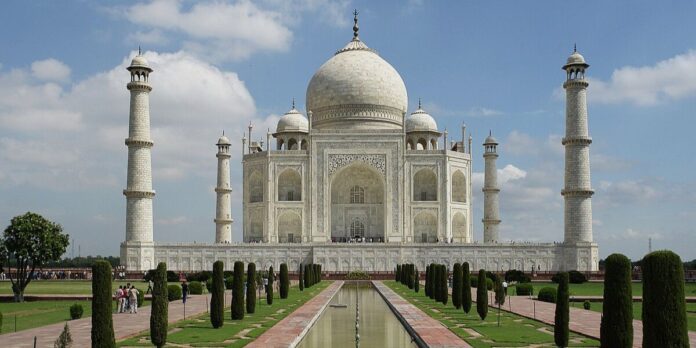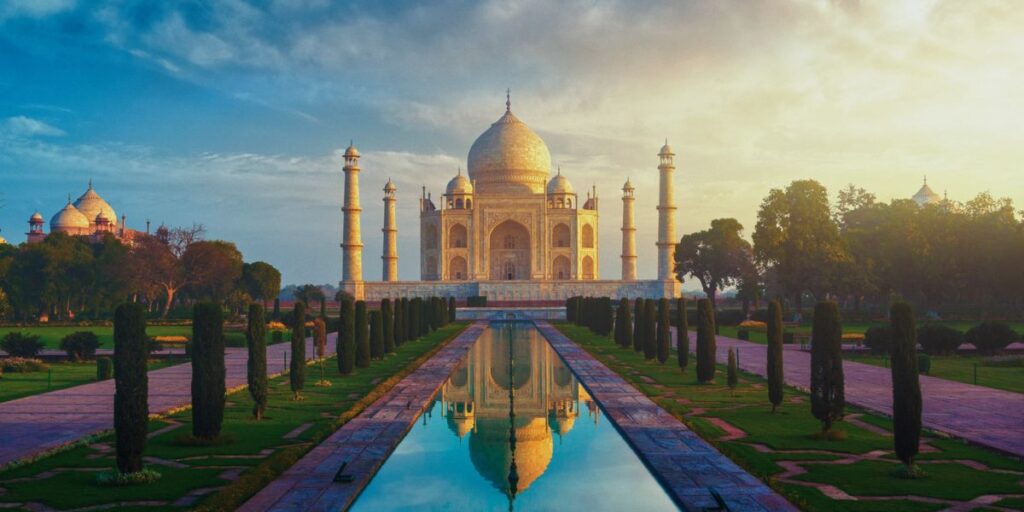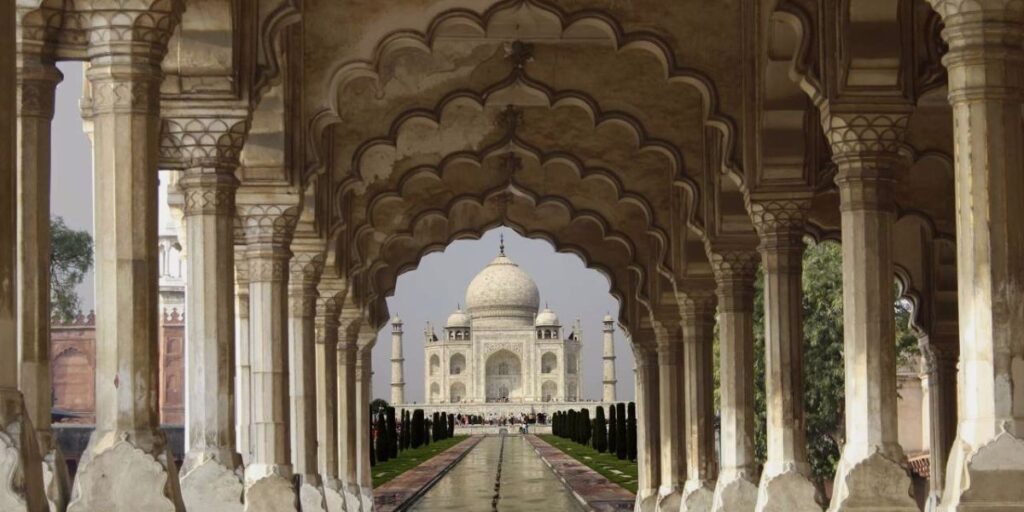The Taj Mahal, one of the most iconic structures in the world, is not merely a magnificent mausoleum but a testament to enduring love and exquisite craftsmanship. Situated in Agra, India, this architectural marvel has a captivating story that transcends time and continues to inspire awe and admiration. Let’s delve into the captivating tale of the Taj Mahal.
The Origin of the Taj Mahal
Commissioned in 1631 by the Mughal emperor Shah Jahan. The Taj Mahal was built in memory of his beloved wife, Mumtaz Mahal, who passed away during childbirth. Mumtaz Mahal was not just a queen but the cherished confidante of Shah Jahan. The grief-stricken emperor was determined to create a mausoleum that would immortalize their love.
The construction of the crown palace took over 20 years to complete and employed thousands of artisans and craftsmen. The design, attributed to architect Ustad Ahmad Lahauri, blends elements from Islamic, Persian, Ottoman Turkish, and Indian architectural styles, resulting in a harmonious masterpiece.
Symbol of Eternal Love
The Taj Mahal is more than an architectural wonder; it is a symbol of undying love. The emperor’s devotion to Mumtaz Mahal is reflected in every detail of this monument. The mausoleum, with its symmetrical layout and pristine white marble façade, stands as a symbol of eternal love and purity.
The central dome, flanked by four minarets, creates a mesmerizing silhouette against the sky. The use of precious and semi-precious stones in intricate floral patterns on the marble surface adds a touch of exquisite beauty, making the crown palace a jewel in the architectural crown of India.
Architectural Marvel
Beyond its symbolic significance, the crown palace showcases exceptional architectural ingenuity. The main structure is built entirely of white marble, quarried from Rajasthan, and is adorned with intricate carvings and inlays. The garden layout, with its reflecting pool and meticulously planned pathways, enhances the serene ambiance of the mausoleum.
One of the most captivating aspects of the crown palace is its changing hues throughout the day. At sunrise, the marble glows with a soft pinkish hue, while under the moonlight, it shimmers like a pearl. This interplay of light and marble underscores the architectural brilliance of the monument.
Preserving Heritage
Over the centuries, the Taj Mahal has faced several challenges, including environmental factors and human impact. Pollution and industrial emissions have contributed to the discoloration of the marble. To combat this, conservation efforts, including cleaning and restoration projects, have been undertaken by authorities to preserve the Taj Mahal for future generations.
A Global Icon
Today, the Taj Mahal stands as a global icon, attracting millions of visitors annually from all corners of the world. Its inclusion as a UNESCO World Heritage Site underscores its universal significance. The Taj Mahal continues to inspire poets, artists, and architects, leaving an indelible mark on the collective imagination of humanity.
Legacy of the Taj Mahal
Beyond its architectural and historical importance, the crown palace symbolizes the enduring power of love. It reminds us of the profound impact of art and architecture in expressing human emotions and aspirations. The story of Shah Jahan and Mumtaz Mahal immortalized in stone serves as a poignant reminder of the depth of human connection and the quest for eternal beauty.
Conclusion:
In conclusion, the Taj Mahal is much more than a monument; it is a living testament to love, craftsmanship, and cultural heritage. Its story resonates across generations, inviting us to contemplate the enduring legacy of one of the world’s most celebrated architectural wonders. The Taj Mahal stands not only as a symbol of a bygone era but also as a timeless expression of the human spirit.




